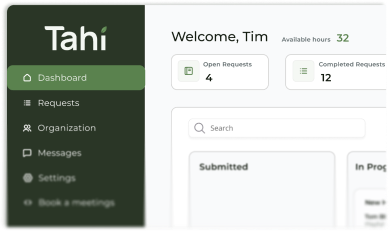Core Web Vitals
Core Web Vitals are a set of specific factors that Google considers important in a website’s overall user experience, measuring speed, responsiveness, and stability.
What are Google's Core Web Vitals and why do they matter?
Core Web Vitals are a specific set of metrics that Google uses to measure the real-world user experience of a webpage. Think of them as a technical health check for how a visitor actually feels when they interact with your site. The three main pillars are Largest Contentful Paint (LCP), which measures loading performance; Interaction to Next Paint (INP), which measures interactivity; and Cumulative Layout Shift (CLS), which measures visual stability.
These metrics matter for two key reasons. Firstly, they are a confirmed ranking signal for Google's search results. A website with good Core Web Vitals scores is seen as providing a better user experience, which can give it a boost in search rankings. More importantly, they directly reflect the quality of your visitor's experience. A fast, responsive, and stable website keeps users engaged, reduces frustration, and builds trust in your brand.
How can I check the Core Web Vitals score for my website?
Checking your website's Core Web Vitals is straightforward, and Google provides several free tools to do it. The most common starting point is Google PageSpeed Insights. You simply enter your website's URL, and it generates a detailed report for both mobile and desktop devices. This report will give you specific scores for LCP, INP, and CLS, and highlight areas for improvement.
For a more comprehensive, site-wide view, you can use the Core Web Vitals report within your Google Search Console account. This tool tracks performance over time and shows you which pages on your site are categorised as 'Good', 'Needs Improvement', or 'Poor'. For real-time testing during development, the Lighthouse tool, built directly into the Google Chrome browser, is an excellent resource for developers and agencies to run instant audits.
What are the best ways to improve Core Web Vitals on a Webflow site?
Improving Core Web Vitals on a Webflow site often comes down to thoughtful design and development practices. One of the most impactful areas is image optimisation. Ensuring all images are compressed and served in modern, efficient formats like WebP can dramatically improve your LCP score. While Webflow has great built-in tools for this, it still requires a deliberate strategy to be effective.
Beyond images, consider how other assets are loaded. Implementing lazy loading for images and videos that are not immediately visible means they only load when needed, speeding up the initial page render. It's also wise to be mindful of custom fonts and third-party scripts, as each one adds to the loading time. These tactics are all part of a holistic Page Speed Optimisation strategy.
Finally, a clean and efficient build is fundamental. A well-structured Webflow site avoids unnecessary code and overly complex interactions that can slow down responsiveness. Building lightweight, purposeful websites is not just about better performance; it's also a more sustainable approach. We explore this idea further in our guide to The Lightweight Advantage.
How much do poor Core Web Vitals impact user experience and conversions?
The impact of poor Core Web Vitals is very real and can be measured in lost engagement and revenue. A slow-loading page (a poor LCP score) is one of the top reasons visitors abandon a site. If your main content takes too long to appear, potential customers will simply leave before you've had a chance to make your case, leading to a high bounce rate.
Interactivity and stability are just as crucial. When a user clicks a button and the website feels sluggish to respond (a poor INP score), it creates a sense of frustration. If the page layout suddenly shifts while they are about to click, causing them to tap the wrong link (a poor CLS score), it breaks trust. A poor User Experience (UX) is a direct barrier to conversions, because frustrated or distrustful visitors are far less likely to complete a purchase or fill out a form.
How can a Webflow agency help with Core Web Vitals?
A great Webflow agency partner doesn't treat performance as an optional extra. It's a core principle that's integrated into the entire process, from the initial design concepts in Figma to the final development and launch. Every decision, whether about image sizes, animations, or site structure, is made with page speed and user experience in mind to ensure the final product is fast, stable, and effective from day one.
At Tahi Studio, we build every website using proven methodologies like the Client-First framework, which naturally promotes clean, scalable, and high-performing development. If your current website is struggling with its Core Web Vitals, you don't have to solve it on your own. A professional review can quickly identify the biggest opportunities for improvement and create a clear path forward.
If you're unsure where to begin, our Free Site Audit is a perfect, no-pressure first step. We can take a look at your site's performance and provide you with actionable insights to help you build a healthier, faster website that both your visitors and Google will appreciate.






